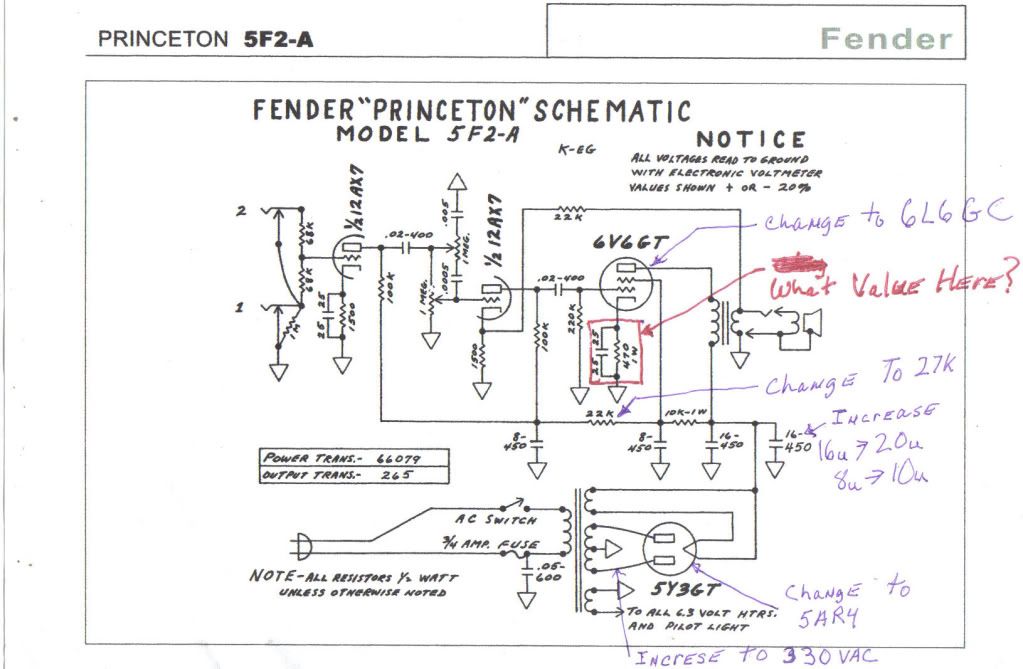First time poster, been lurking awhile however.
this is gonna be my first build, and I've chosen a 5f2a.
but I want a little more power and more clean headroom, so I'm gonna mod the circuit to use a 6L6gc. What I need help with is determining the correct values for the cathode bias resistor and associated bypass cap.
thanks in advance
Frank
<a href="http://s625.photobucket.com/albums/tt334/big-daddy-59/?action=view¤t=Modified5f2a.jpg" target="_blank"><img src="http://i625.photobucket.com/albums/tt334/big-daddy-59/Modified5f2a.jpg" border="0" alt="5f2a schematic modified for 6L6"></a>
this is gonna be my first build, and I've chosen a 5f2a.
but I want a little more power and more clean headroom, so I'm gonna mod the circuit to use a 6L6gc. What I need help with is determining the correct values for the cathode bias resistor and associated bypass cap.
thanks in advance
Frank
<a href="http://s625.photobucket.com/albums/tt334/big-daddy-59/?action=view¤t=Modified5f2a.jpg" target="_blank"><img src="http://i625.photobucket.com/albums/tt334/big-daddy-59/Modified5f2a.jpg" border="0" alt="5f2a schematic modified for 6L6"></a>


 )
)
Comment